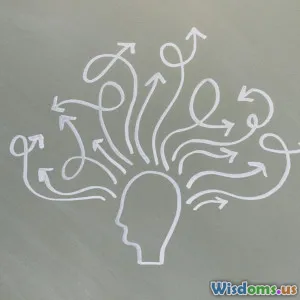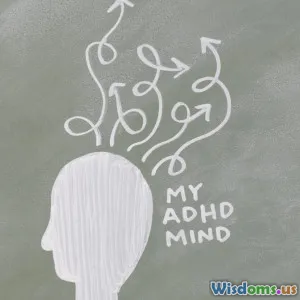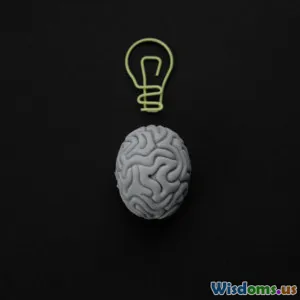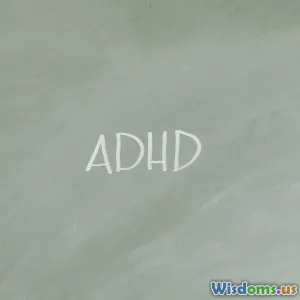
The Cultural Significance of Dreams
8 min read Explore how dreams shape cultures through science, symbolism, and society across history. (0 Reviews)
The Cultural Significance of Dreams: An Intersection of Brain Science and Society
Dreams have fascinated humanity across all known cultures and eras, often viewed as ethereal whispers from the subconscious or even messages from the divine. The question "What do our dreams mean?" has intrigued not just mystics and storytellers but also scientists striving to understand the brain. This article dives into the rich cultural layers of dreams while shedding light on the neurobiological mechanisms that give rise to them. By appreciating both perspectives, we’ll grasp how dreams influence cultural narratives, personal identity, and shared human experience.
Introduction: Dreams Between Science and Culture
Dreams linger at a mysterious crossroads where brain science meets culture. Scientifically, dreams arise during rapid eye movement (REM) sleep, engaging complex neural activity linked to memory consolidation, emotional regulation, and problem-solving. Culturally, dreams are woven into myths, religions, and artistic expression worldwide—from prophetic visions in ancient Egypt to modern cinema.
Historian and psychologist Carl Jung notably proposed that dreams tap into a "collective unconscious," a shared symbolic reservoir underlying all human cultures. Whether symbolic or neurological, dreams manifest powerful narratives that resonate on psychological and societal levels.
The Neuroscience Behind Dreams
REM Sleep and Brain Activity
Dreams primarily occur during REM sleep, a distinct phase marked by heightened brain activity and vivid imagery. Studies using electroencephalography (EEG) show increased activation in the limbic system—responsible for emotions—and decreased activity in the prefrontal cortex, the rational decision-maker. This imbalance fosters the bizarre yet emotional quality of dreams.
Recent fMRI research confirms that during REM, areas like the amygdala intensify reactions to emotional stimuli, making dreams an emotional processing tool. According to a 2018 study by the National Institute of Neurological Disorders and Stroke, dream content often reflects daily life and internal conflict, suggesting a functional role in mental health.
Memory Consolidation and Problem-Solving
Dreams contribute significantly to memory processing. During REM sleep, the brain reorganizes and integrates new information, essentially "practicing" responses to complex problems. This is illustrated in famous anecdotes like that of chemist Friedrich Kekulé, who reportedly dreamed of a serpent biting its tail—a vision that inspired the benzene ring model.
Dreams and Culture: Symbolism and Meaning
Ancient Civilizations and Dream Interpretation
Many ancient societies treated dreams as portals to other realms or divine messages. The Egyptians meticulously documented dream interpretations on papyri, often associating dreams with the gods' guidance. The "Ipuwer Papyrus," dating back over 3,000 years, interprets dreams as warnings of societal upheaval.
Similarly, Mesopotamians revered dreams through official dream interpreters called "šēdu priests," who advised kings based on nocturnal visions. In the Bible, dreams play pivotal roles, such as Joseph’s prophetic dreams foretelling his rise and societal events.
Indigenous Perspectives
Indigenous cultures often view dreams holistically, as interwoven with everyday life. Native American traditions consider dreams a source of wisdom and spiritual insight. The Ojibwe practice of "dreamcatchers" embodies the belief that good dreams filter through the web-like structure, while nightmares become trapped.
Australian Aboriginal peoples use dreams conceptually in the "Dreamtime," a foundational mythology explaining creation and social laws through ancestral beings' nocturnal journeys.
Dreams in Art and Literature
From surrealist painters like Salvador Dalí to iconic movies such as "Inception," dreams permeate artistic expression. Literary classics such as Shakespeare’s plays often incorporate dreams to reveal characters’ innermost conflicts or foreshadow events. This symbolism connects cultural storytelling with subconscious motifs, giving dream interpretation perennial relevance.
Modern Psychology: Dreams and the Subconscious
In the 20th century, Sigmund Freud revolutionized the study of dreams by framing them as manifestations of repressed desires. His seminal work The Interpretation of Dreams (1899) argued that latent content underpins the manifest imagery of dreams.
Carl Jung built on Freud’s ideas, introducing archetypes—universal symbols appearing in dreams across cultures (e.g., the Shadow, the Anima/Animus). Jung suggested that dream analysis could foster individuation, the psychological process of self-realization.
Today, dream therapy remains a tool in psychotherapy, validating dreams as windows into emotional states and subconscious healing processes.
Why Dreams Matter in Contemporary Society
In our fast-paced digital age, dreams retain cultural and personal significance. Apps designed to track and analyze dreams merge folklore with technology, reflecting a societal desire to decode subconscious narratives. Furthermore, in collective trauma contexts—such as during the COVID-19 pandemic—studies noted shifts in dream content towards themes of anxiety, connection, and renewal.
Dreams also inspire innovation and creativity. Numerous patents and artistic breakthroughs claim origins in dream-inspired insights, underscoring the subconscious mind's untapped potential.
Conclusion: Dreams as a Bridge Between Mind and Culture
Dreams encapsulate a dynamic interplay between the biological brain and cultural meaning-making. As neurobiology deciphers mechanisms behind dreaming, and anthropology explores symbolic interpretations, we gain profound insights into the human condition.
By honoring dreams’ cultural significance and scientific foundations, we enrich our understanding of identity, creativity, and shared humanity. In doing so, we keep alive millennia of tradition even as we advance modern science—a testament to the enduring power of the night’s visions.
References
- Nielsen, T. A., & Levin, R. (2007). Nightmares: a new neurocognitive model. Sleep Medicine Reviews, 11(4), 295-310.
- Kramer, M. (2007). The Nature and Functions of Dreaming. In M. Kryger et al. (Eds.), Principles and Practice of Sleep Medicine.
- Freud, S. (1900). The Interpretation of Dreams.
- Jung, C. G. (1964). Man and His Symbols.
- Hartmann, E. (2010). The Neurobiology of Dreaming. In E. Barrett (Ed.) The Science of Dreaming.
This article combines historical, scientific, and cultural perspectives to reveal the multifaceted significance of dreams to humanity.
Rate the Post
User Reviews
Popular Posts




















